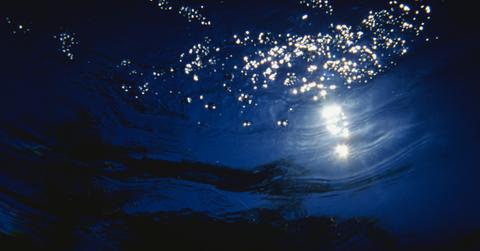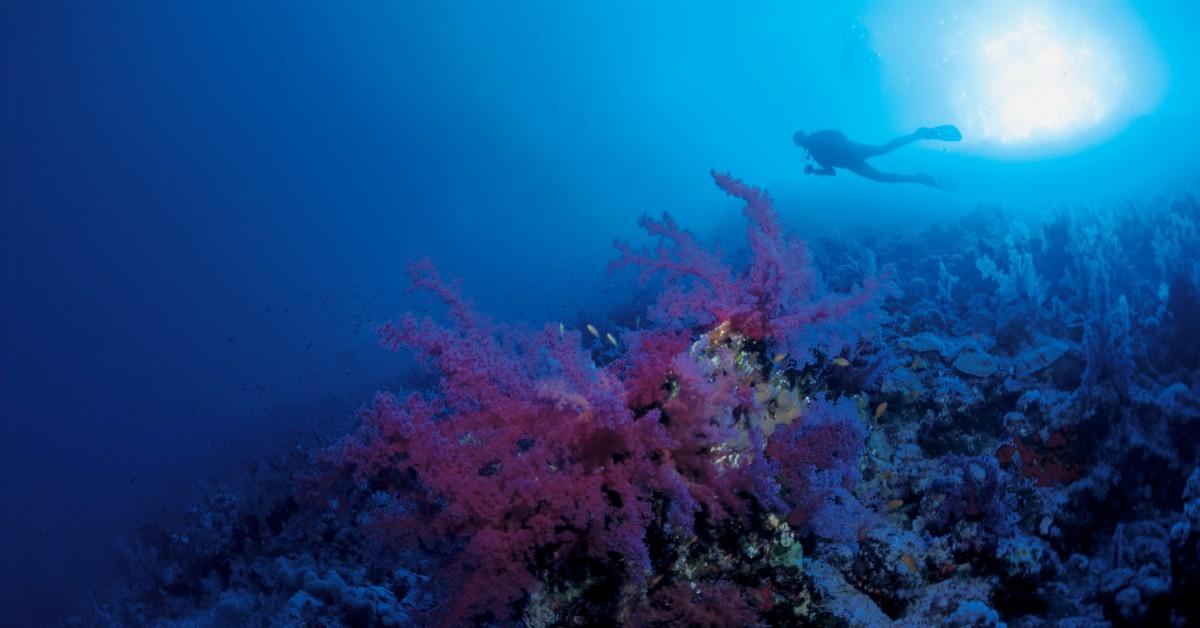Scientists Discover "Dark Oxygen" in the Ocean, Changing Everything They Knew About the Seafloor
Experts say that we should change the way we legislate deep sea mining because of this.
Published July 23 2024, 1:17 p.m. ET

Scientists are stunned after discovering "dark oxygen" while visiting the ocean's depths. While dark oxygen may sound like the title of a scary movie, it's quite an interesting phenomenon that goes against everything experts thought they knew about what happens deep down beneath the ocean's surface, where sunlight cannot penetrate.
Keep reading to find out what dark oxygen is, and why scientists are warning lawmakers about the need for more robust legislation when it comes to deep-sea mining.

What is dark oxygen?
To understand dark oxygen, first, you must understand how oxygen is produced in the ocean. According to the BBC, nearly half of all oxygen on Earth comes from the ocean, which is created by marine plants during photosynthesis. Until the discovery of dark oxygen, it was believed that sunlight was needed for this process. However, researchers discovered that oxygen was being produced down at deeper depths where no sunlight could reach.
Professor Andrew Sweetman, the lead researcher from the Scottish Association for Marine Science, first discovered dark oxygen in 2013, when a deep-sea expedition seemed to show that oxygen was being produced by metallic "nodules," which can split the ocean water (AKA: H2O) into their hydrogen and oxygen forms. But, because this went against everything experts know about oxygen production, Sweetman told the BBC that he initially ignored his findings.
But upon a closer inspection, he says he realized that these nodules — which are created from dissolved metals that collect on the shells, the beaks shed by octopi, and shark teeth that make up the seafloor — were what was behind the oxygen, making for an incredible discovery.
The discovery of dark oxygen raises questions about deep-sea mining.
Because these metallic nodules contain precious metals that are needed to make so much of the earth's batteries, like copper, lithium, and cobalt, Sweetman and others worry that the desire to mine these items will lead to catastrophic changes on the ocean's floor. And he has good reason to be worried, according to CNN, who says attempts to mine the seafloor in the 1980s have shown some of the inherent dangers from the process.
They say that visits to some of those initial mining sites in 2016 and 2017 showed that the areas remained relative "dead zones," where not even bacteria would grow. It's a stark difference from unmined areas, which CNN notes are still lush with life. This area, known as the Clarion-Clipperton Zone, has already gained some attention from mining companies who are looking to develop the technology and tools needed to mine those precious metals.
This is something that Sweetman and others are sounding the alarm about, asking world leaders to consider the potential risks that could come along with these excavations, including the potential to speed up the already rapidly worsening climate crisis.
Of course, when it comes to big business and politics, it will take a united front to prevent something like this from happening, which is harder to come by in these changing geopolitical times.